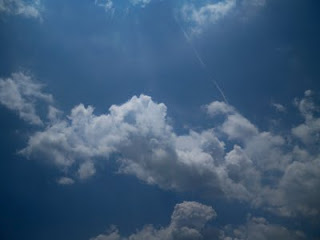An article in yesterday’s Washington Post headlined “Is a city still a city if it’s in the suburbs?” discusses Reston Town Center, the Village at Leesburg and other “downtowns” that mimic the real thing.
The idea is to export urban density and excitement to the outlying ‘burbs. “[People] want to be in an environment, in a context, where they can experience life as fully as possible. They like to be around people, and they like to be around interesting things, and they like to be around energy. And that’s what the suburbs have historically lacked,” said Robert Kettler, who planned and developed the Village at Leesburg based on the model of Reston Town Center.
I have a complicated relationship with Reston Town Center, our closest “downtown.” When it was first built, I disparaged it for its fakery. It was a movie set of a city. Walk through the set doors and you would be in a mall. But as the years have passed; as restaurants, stores and plazas have been added; as festivals, concerts and wine tastings have lured me to its center, I have developed a reluctant fondness for the place.
As the article points out, many city neighborhoods now admired for their hip urbanity —think Capitol Hill and Georgetown — were once planned. And besides, how can I fault developers for paying attention to how people live, to adding town squares and storefront windows, to isolating and replicating the ingredients of urban charm?
Kettler has heard all the criticisms of these faux downtowns, the Post article says. “But he sees a naturally evolving plot: Driving through the Village at Leesburg, he is happy to see that the young trees he planted a few years ago are a little taller, that there are more people hitting treadmills at L.A. Fitness, that there are more people on the street. ‘When you put the camera on and you put the actors on the stage, it looks like a real place.'”
The article doesn’t answer the question, “Is a city still a city if it’s in the suburbs,” but it does plead for more time. Cities are a work in progress. It may just be that we’re pioneering something new here a few miles from my house. That what began as an experiment of urban density in the suburbs is giving us something we all want and need.
It may be. But when we decide whether and when to leave our suburban home, one thing is for sure: Reston Town Center will not make us stay.
The original Reston downtown: Lake Anne.


